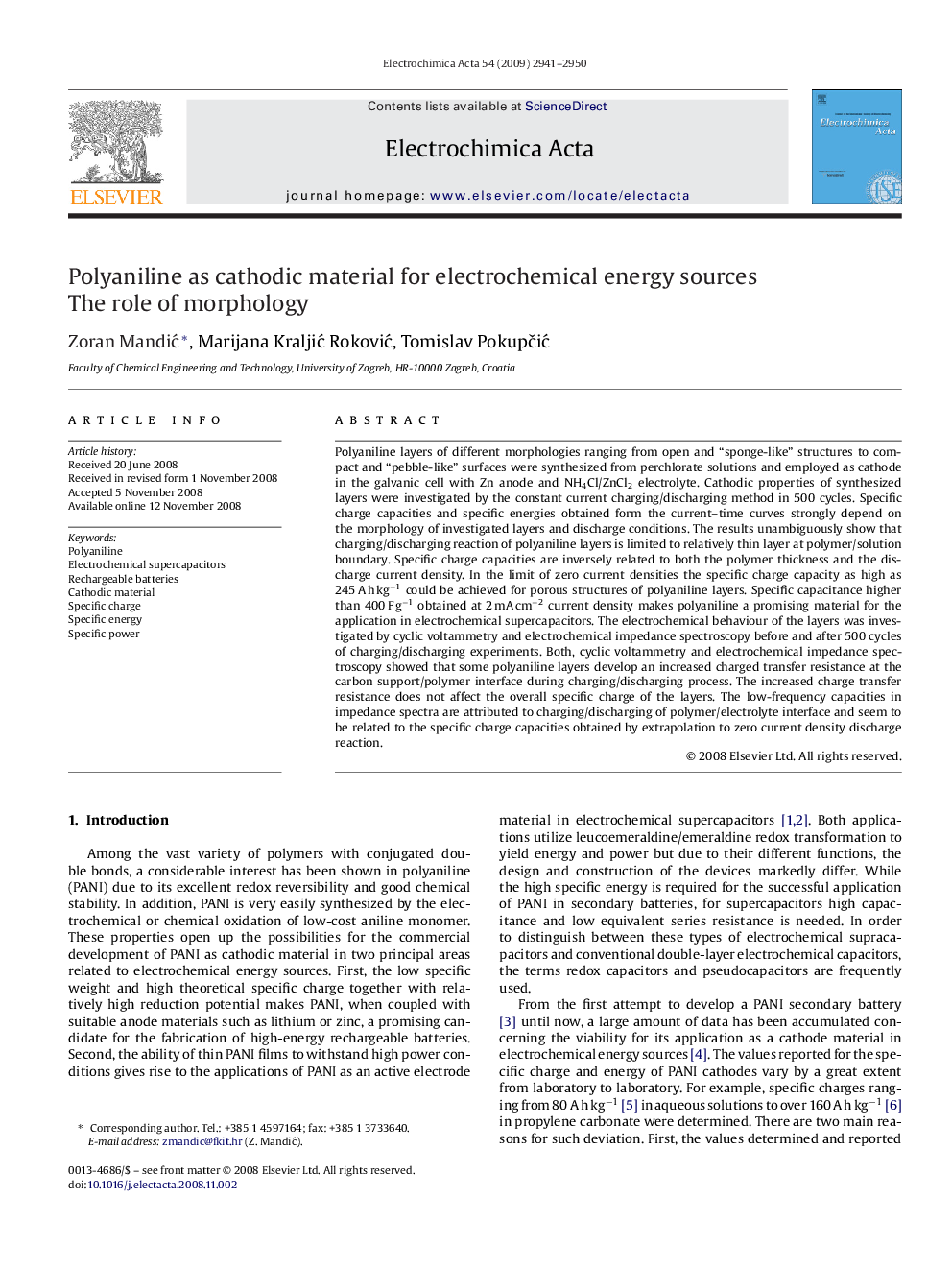| Article ID | Journal | Published Year | Pages | File Type |
|---|---|---|---|---|
| 192642 | Electrochimica Acta | 2009 | 10 Pages |
Polyaniline layers of different morphologies ranging from open and “sponge-like” structures to compact and “pebble-like” surfaces were synthesized from perchlorate solutions and employed as cathode in the galvanic cell with Zn anode and NH4Cl/ZnCl2 electrolyte. Cathodic properties of synthesized layers were investigated by the constant current charging/discharging method in 500 cycles. Specific charge capacities and specific energies obtained form the current–time curves strongly depend on the morphology of investigated layers and discharge conditions. The results unambiguously show that charging/discharging reaction of polyaniline layers is limited to relatively thin layer at polymer/solution boundary. Specific charge capacities are inversely related to both the polymer thickness and the discharge current density. In the limit of zero current densities the specific charge capacity as high as 245 A h kg−1 could be achieved for porous structures of polyaniline layers. Specific capacitance higher than 400 F g−1 obtained at 2 mA cm−2 current density makes polyaniline a promising material for the application in electrochemical supercapacitors. The electrochemical behaviour of the layers was investigated by cyclic voltammetry and electrochemical impedance spectroscopy before and after 500 cycles of charging/discharging experiments. Both, cyclic voltammetry and electrochemical impedance spectroscopy showed that some polyaniline layers develop an increased charged transfer resistance at the carbon support/polymer interface during charging/discharging process. The increased charge transfer resistance does not affect the overall specific charge of the layers. The low-frequency capacities in impedance spectra are attributed to charging/discharging of polymer/electrolyte interface and seem to be related to the specific charge capacities obtained by extrapolation to zero current density discharge reaction.
